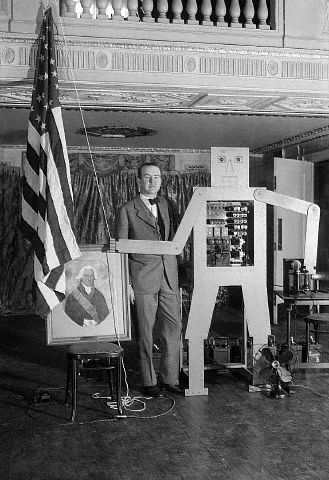
Whilst Roy James Wensley's "Televox" came about in 1927, he had invented and patented an earlier "supervisory control system" (patent filed in 1923). This system was effectively a system that could "remotely control" equipment via power lines, wireless, telephone lines, but not sound, which is how it is differentiated with the later "Televox". Some articles give this earlier "supervisory control system" a start date of 1924, a year later than the actual patent application.
SUPERVISORY CONTROL SYSTEM R. J. WENSLEY
Patent number: 1702423 – see here
Filing date: 1 Oct 1923
Issue date: 19 Feb 1929
In the "Televox" unit, it now had voice control (more correctly it responded to a tuned tone in the first version). Note that "Vox" means a human voice. In the photos of the first version of Televox, you usually see a tin whistle being played in front of a candlestick telephone. Televox never had true voice control. The emphasis on the word "Televox" was that the monotonal sounds had to be in the voice range for which the telephone network was designed for. Originally the three tones were tuned to 600, 900, and 1400 cycles per second (Hertz). Scott Schaut's excellent book on Westinghouse robots ("Robots of Westinghouse – 1924 – today", 2006) give a lot of detail which I wont include in this post.
The patent for "TELEVOX" is found here
TELEVOX SUPERVISOR AND CONTROLLER Roy J. WENSLEY
Patent number: 1765471
Filing date: Oct 14, 1927
Issue date: Jun 24, 1930
Here's a picture and article on the original 1927 unit.
Look first at that Mechanical creature answering the telephone. He is the invention of R. J. Wensley an engineer of the Westinghouse Electric and Manufacturing Company, and goes by the name of Televox. It you could dissect him you would find his inner workings much like those of your radio receiver, and little more complicated.
Yet if you should establish him at home in your absence—which the inventor says is not at all impracticable—he would serve you as a trustworthy and obedient caretaker. The mechanism consists primarily of a series of electrical relays, each sensitive to a sound of a certain pitch, and capable of translating that sound into specified mechanical action, such as opening and cloning the switches of electrical appliances.Each relay is actuated through a tuned electrical circuit responsive to vibration of a given frequency and no other, somewhat as the circuits of your radio can be tuned to a broadcasting station of a given wave length.
The mechanical man is not connected electrically to the telephone but listens much as you would. His ear is a sensitive microphone placed close to the receiver. His voice is a loudspeaker close to the transmitter. And the language he speaks is a series of mechanically operated signal buzzes. Experimentally, he has been made to understand and respond to words uttered by human voices, but for practical operation the language which spurs him to action has been simplified to three different sounds of different pitches. These sounds are made either by three tuned pitch pipes or, as in the New York demonstration, by three electrically operated tuning forks.
For illustration, imagine you are at the house a friend and are calling your home equipped with a Televox. In the ordinary way you telephone your home. Why, your phone rings. Televox lifts the receiver and utters a combination of buzzes which tell you that you have the right number.
Now you sound a single high note from the first pipe, which means, "Hello, get set for action." Televox stops buzzing and responds with a series of clicks, saying "All set; what do you want?".
Next you sound two short notes from the same pipe. These tell Televox to connect you with the switch on the electric oven. The reply is two short buzzes saying, "You are now connected," followed by a long buzz-z-z-z, which informs you that "the switch is open." At this. you sound a deeper note on the second pitch pipe, meaning "Close the switch and start the oven." Immediately Televox ceases the long buzz, closes the switch, then replies with a short, snappy buzz informing you that the switch has been closed and the oven is going. Next you may wish to inquire about the furnace, and with the first pitch pipe you sound three shrill notes. This means "Connect me with the furnace and tell me how hot it is." The reply is three short buzzes, telling you that the connection has been made, followed by a pause, then two more buzzes which say, "The furnace is pretty low."
So you blow four blasts from the same pitch pipe, meaning "Connect me with the switch operating the drafts." Televox replies with four buzzes, signifying that the connection has been made; then one short buzz informing you that the drafts are closed. With one blast from the second pitch pipe you order the drafts opened. Televox instantly opens them, then gives the long buzz to say that the job is done. If nothing further requires attention, you blow the third pitch pipe, the lowest in tone of the three, which says "Good bye." Televox hangs up the receiver, and stands ready for the next call.
Each of these astonishing actions, as already explained, is accomplished by a different sound-sensitive relay. When the bell rings, the noise causes the first relay to lift the telephone hook and start the signal buzzer. The high note of the first pipe serves to connect any desired one of a number of relays, each of which has been arranged to control a certain operation. Thus, when the note is sounded twice, it moves a switch that connects relay number two, controlling the electric oven. When sounded three times, it connects relay number three, and so on, according to the number of operations for which the apparatus is designed. Each time a relay is connected, Televox gives a corresponding number of buzzes, indicating that the connection has been made. Moreover, it sounds an additional long or short buzz indicating whether the switch to be operated by the relay is open or closed. The lower note of the second pitch pipe is the operating note; that is, it causes the connected relay to open or close the switch as may be required; also to report the fact by changing its long buzz to a short one, or vice versa, The deep note of the third pitch pipe simply causes Televox to quit work and ring off. To demonstrate that Televox will respond to spoken words as well as musical notes, the inventor has set up in the Westinghouse laboratories at East Pittsburgh, Pa., a mechanism which will open a door to the call of "Open sesame!". The sounds of the voice, however, are too highly complicated for use in general practice. Still, a person with a good ear for music can get response from Televox by whistling or singing in the exact notes to which the relays of the machine are tuned. Three of the machines already are in actual use in Washington, D. C., replacing watchmen at reservoirs. By their buzzes they tell the distant caller the height of water as shown by the gage in the reservoir, and also control the flow of water at his bidding.
The above article contains the only mention I can find where Wensley rigged his laboratory doors to open when the words "Open, Sesame!" were uttered. The SciAm article (Dec 1927) mentions the door opener and how it works. (see Technograph Dec 1944 for words on operation from this Sci Am article).
Some period headlines:
New York Times
MECHANICAL 'MAN' OBEYS HUMAN VOICE; Westinghouse Demonstrates an Automaton That Fills Jobs and Executes Orders. SENSITIVE TO CERTAIN TONE Three at Work at Reservoirs Answer Phone Calls on Status of Water Supply.
October 14, 1927, Friday
Page 1,
The Westinghouse Electric and Manufacturing Company demonstrated yesterday at the Westinghouse Building, 150 Broadway, an electric mechanism which, when addressed in a proper tone, replies by means of sound waves within the human voice register, gives correct information and executes various commissions.
*"New System Controls Machinery by Sound," Scientific American, 137 (Dec, 1927), .S36.
Televox Notes by RJH (2009).
The earlier version of Televox was a large upright rectangular box, with a smaller squarer box on top. When mounted on a bench, the two boxes resembled a body with a head. The New York Times, on 23 Oct 1927, had an article on Televox with a cartoon of the boxes carrying articulated limbs, in robot likeness.

The version we see with the human form made from something like wallboard was made for the occassion of George Washington's birday, dated 22 Feb. In this case the year was 1928. The Televox unit for this model was a smaller portable unit that consisted of a single box mounted on a frame. There was a separate phone handset. One will notice that there was quite a variation in the "wallboard" cutouts, including different shapes, painted faces, and later electric lamps for eyes. One aspect worth mentioning here is that there were eventually multiple "Televox" units being sent around the country for demonstration purposes. For portability reasons, if the wallboard cutout could not be carried, instructions were available giving the dimensions for one to be made locally out of materials such as cardboard. One of the reasons for the portable unit being built was the new invention of "grid-glow tubes" by a young Knowles of Westinghouse. You can clearly see these in these in images of the portable unit as three tubes next to each other. Each tube being for one whistle signal. I will talk about grid glow tubes in a later post on robot enabling technologies.
Televox was later named "Herbert Televox". The earliest date I can find for the name Herbert is October 1928.
There appears at times some debate over whether or not "Televox" was the first robot. Eric the Robot, built by Capt W.H. Richards from Britain had his coming out on September 1928, making "Televox" the first between the two (in anthropomorphic robot terms). Not well known, however, is that Capt Alban J. Roberts "Kaiser" pre-dates both of these by being built in 1920.
Also see earlier Mechanical Men enabling technologies here.
.jpg)
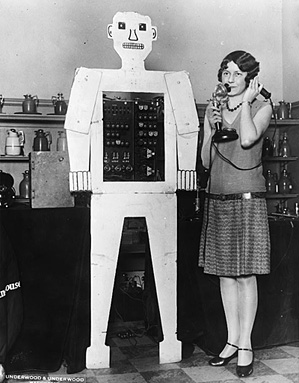
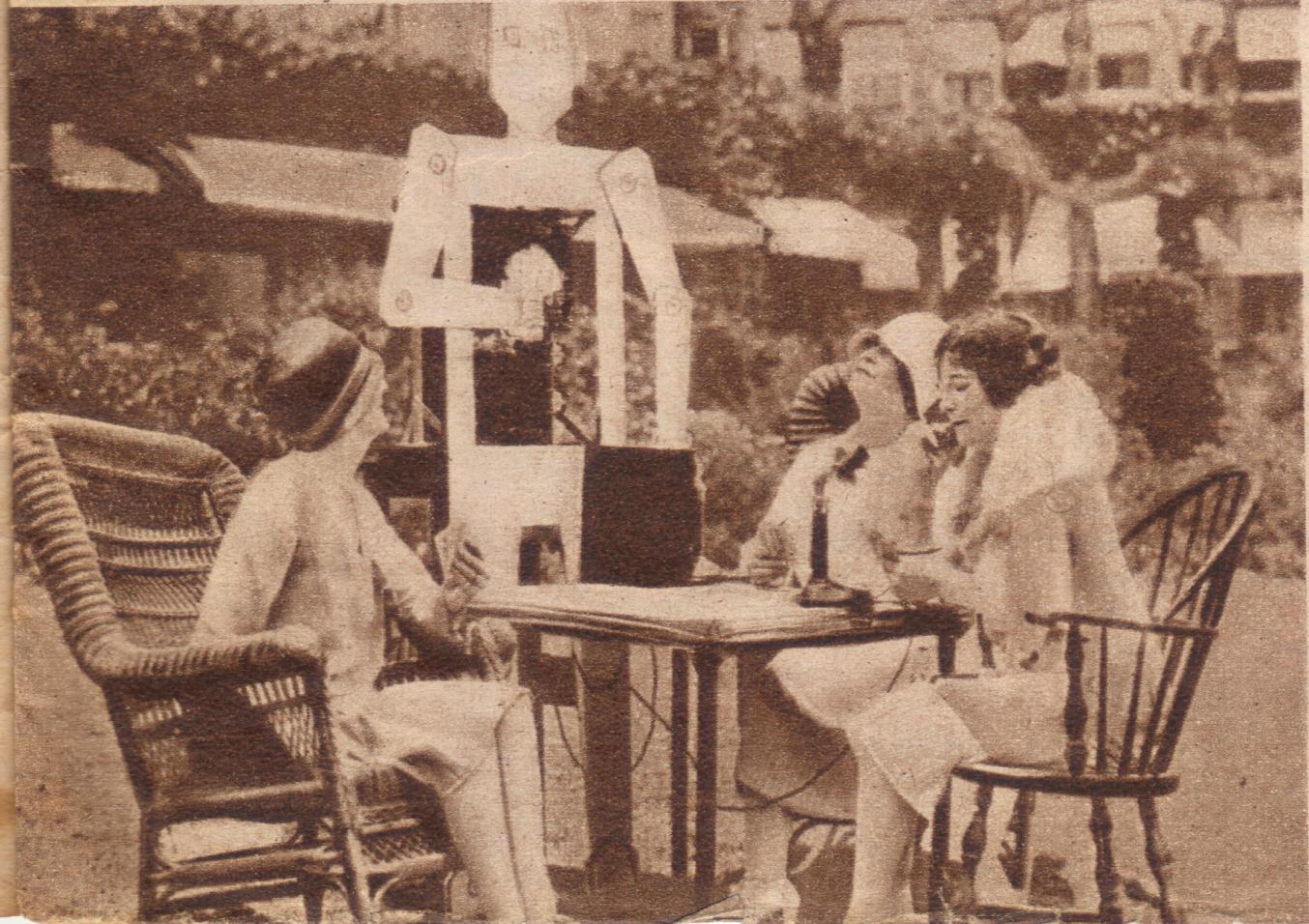
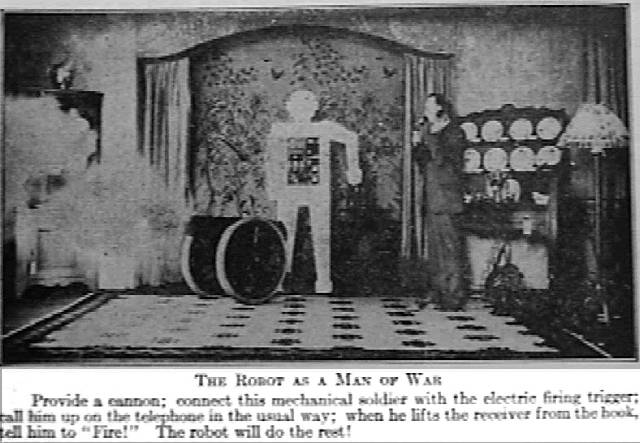

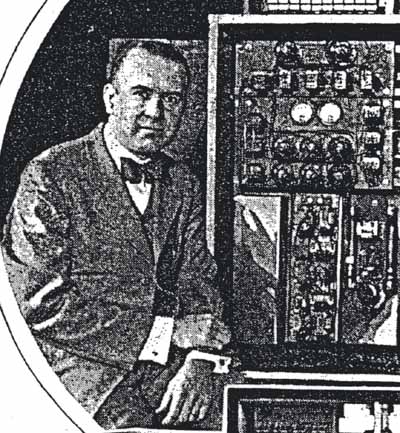
The picture below is one one the sharpest I've seen. Quite a bit of detail can be gleaned from this. The photo was found on Jim Linderman's web page.
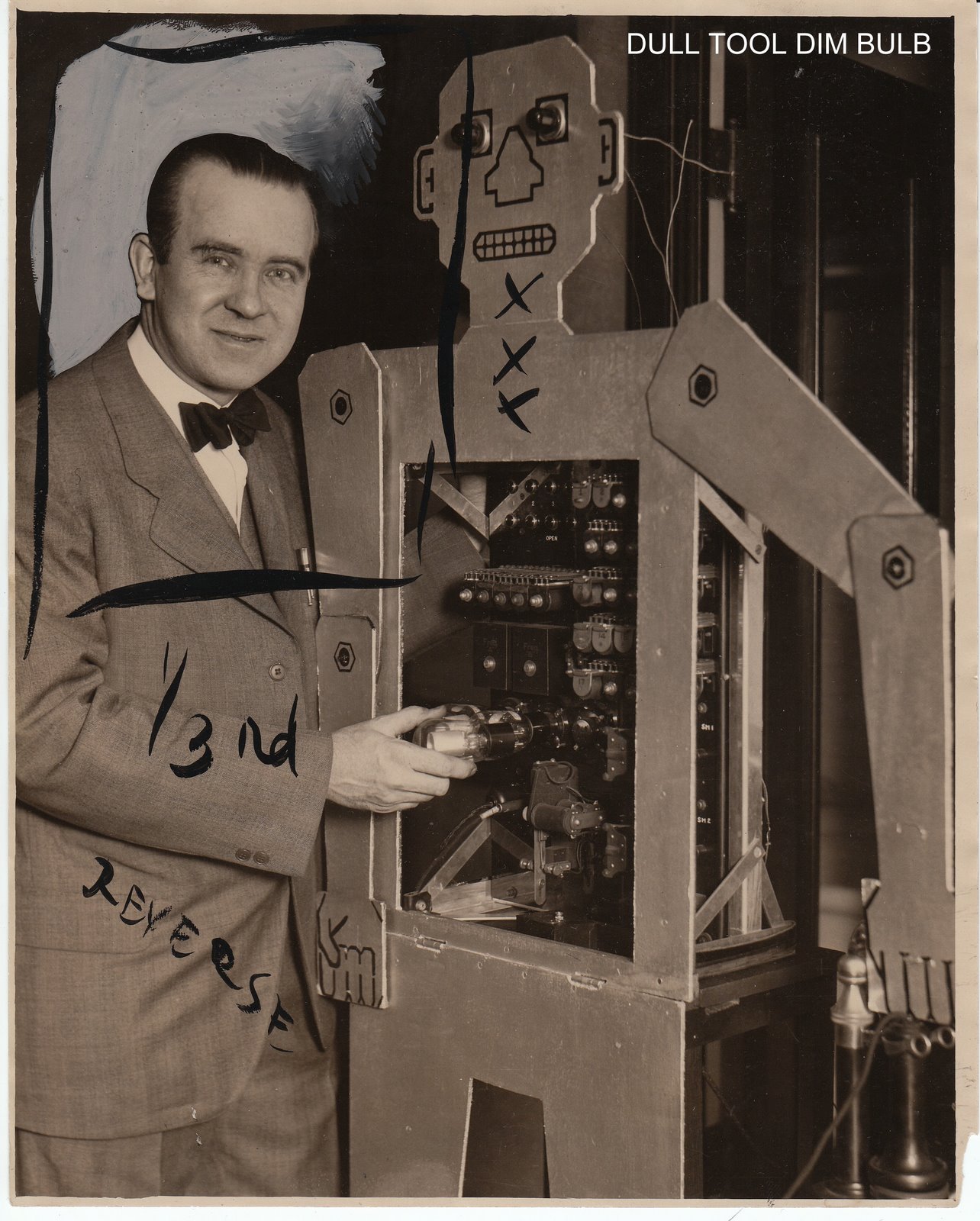
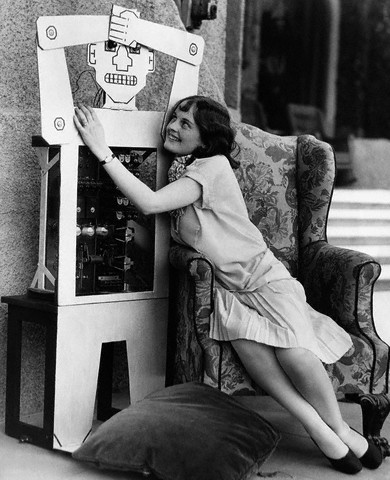
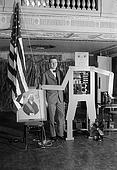

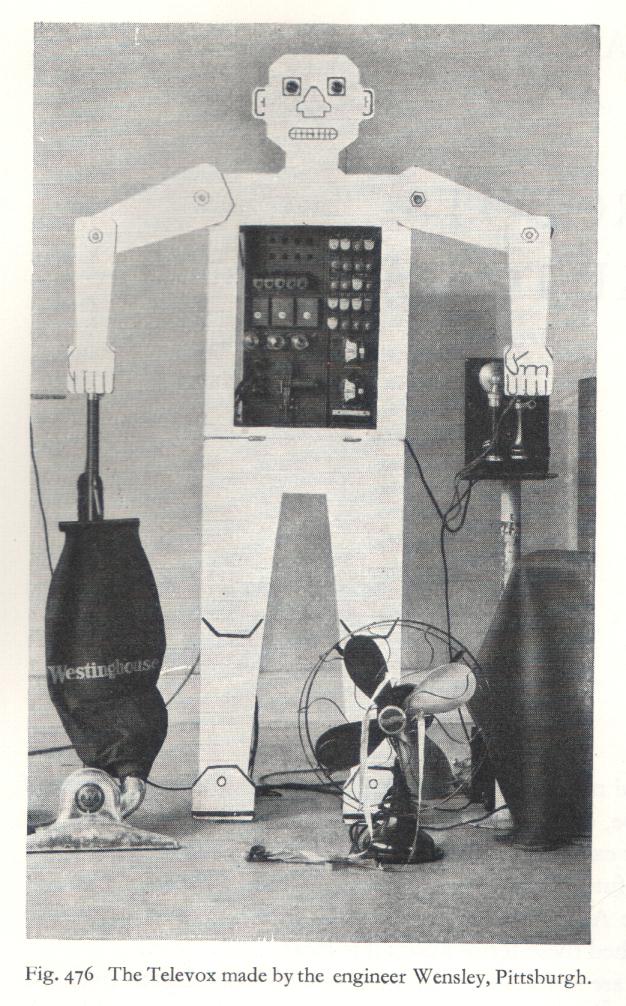
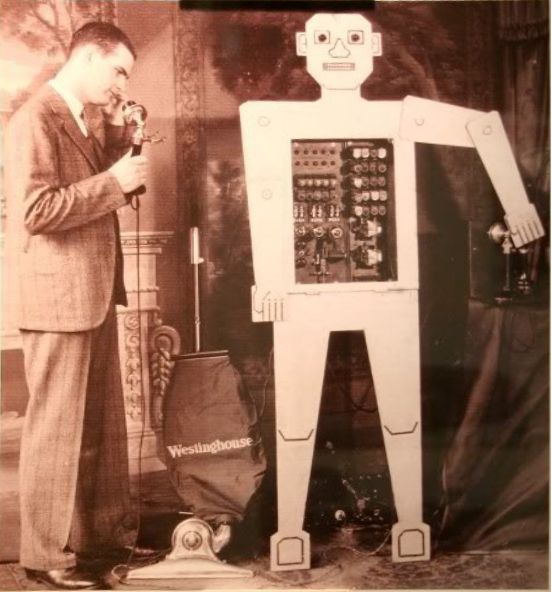
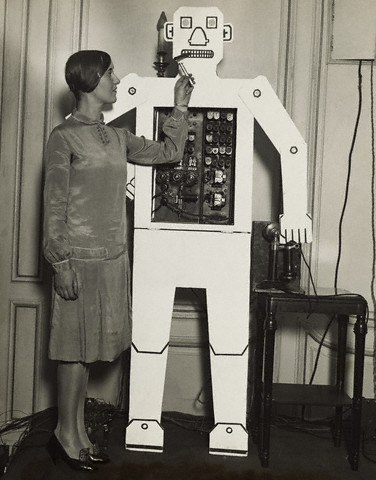
Several photos show Televox smoking a cigar, a feature carried later by all the Westinghouse robots, amongst others.

A later enhancement was to give Televox a voice. This was in the form of a "talkie movie" film made into an endless strip some 15-20 feet long, seen in the right hand side of this image :
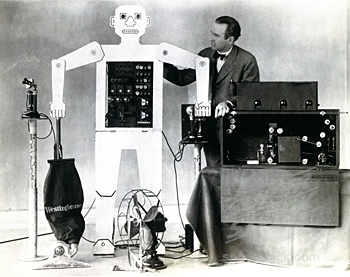
Here is the patent reference to the talking Televox :-
TALKING TELEVOX ROY J. WENSLEY see here
Patent number: 1765554
Filing date: Mar 26, 1929
Issue date: Jun 24, 1930
2 Replies to “1927 – Televox – Roy J. Wensley (American)”
Comments are closed.